We previously discussed some advice for first-time gun owners, and hope that framework for learning was well-received and widely circulated. We think it’s an excellent roadmap for those new to the gun, to chart their progress towards safety and competency with firearms.
Alas, the article was just a guide to discovery, and couldn’t begin to answer the multitude of questions that new gun owners have. Finding the answers to those questions is a difficult task for the uninitiated, and honestly, it can even be difficult for the veteran. Despite being a lifelong “gun guy,” I’m still searching for “the answers” to many of my questions! That’s just the nature of seeking knowledge, regardless of the endeavor—the more you learn about a subject, the more you discover there’s so much out there that you still don’t understand.
Big Wave
Reasonable estimates of the gun owning population indicate we’ve added somewhere around 8 to 9 Million new gun owners to our ranks in 2020 alone, and that doesn’t even count the similar spikes in first-time gun ownership following high-profile events like the 9/11 attacks, or the post-Sandy Hook assault on guns and gun owners. Simply put, there’s a LOT of new gun owners and shooters out there, and a lot of them are looking for good answers to hard questions.
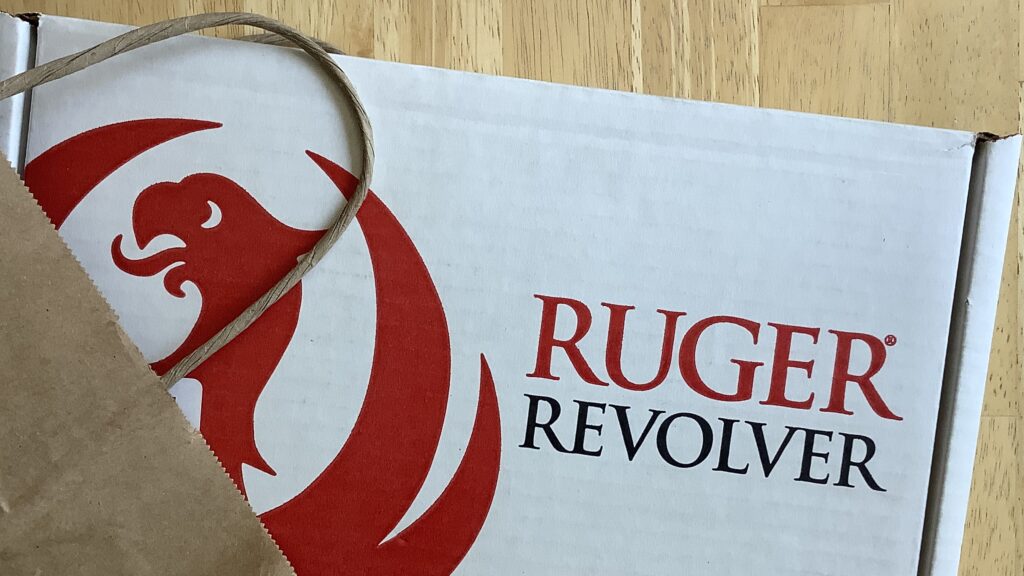
I’ve run into lots of these folks over the past year, and I suspect many of my fellow RevolverGuys have as well. I’ve had longtime friends, who flirted with the idea of buying their first gun for many, many years, suddenly get serious about it and enlist my help. Other friends, neighbors, coworkers, and acquaintances have similarly approached me for help, after they found out that I was a “gun guy.” Of course, as an instructor and Range Safety Officer, I also get to help the nervous novices who show up at my range with their shiny new guns, and aren’t sure where to start.
Bad steers
I recently had a unique insight to the difficulties these new owners face as they try to become educated. As part of my commitment to learning and teaching, I decided to take a defensive handgun class from a recommended school. In the process, I saw a lot of good questions from my fellow students receive bad answers from our instructors. Frustrated by this, I pulled some of the questioners aside during the breaks and tried to give them a better answer, but there was still a lot of unfixed damage by the end of the weekend.
There’s a lot of reasons why this happens. Some instructors are hesitant to admit they don’t know the answer to a question, so they’ll bluff their way through it to save face with a student. Others have an inflated sense of their own expertise and knowledge, and simply deliver bad information–often with great conviction–because they don’t know any better.
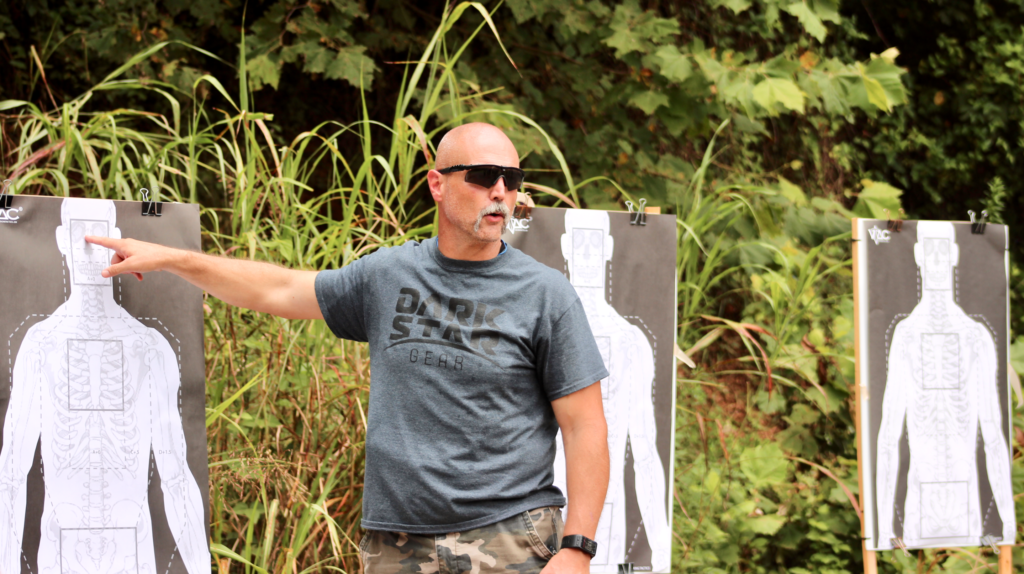
To cut the instructors some slack, it’s not always about their ego. In some cases, a student will innocently ask a very broad question that’s impossible to answer within the time constraints of the class, so they get a brief–and regrettably, incomplete–response as a result. In other cases, the instructor is presented with a problem that they cannot fix with the available time and resources, so they give the student a work-around that will get them through the class, knowing that it may not be an acceptable long-term solution, but it’s the best that can be done for now.
It’s regrettable, even if it’s understandable, that these things can happen. It would be great if every hungry student got a reasonable response to their burning questions, but sometimes that’s just not how it works.
Repairing the dIke
So, in an effort to help remedy some of that damage, what I’d like to do here is present some of the questions and answers I heard this past weekend, then answer them more thoughtfully. Aside from the value of the information itself, I think it might be helpful for our new friends to see how I answer the questions, because that may help them to recognize the difference between a “good” and a “bad” answer—a skill which will be useful to them as they continue to grow as students of the gun.
Before we get started, I should note the questions I heard were mostly centered on autopistols, because that’s what all the students in the class were armed with. As a result, there won’t be much revolver-specific information here, but I hope you’ll appreciate the broader perspectives found in my answers and understand that they’re universally applicable to revolvers as well. Don’t worry—RevolverGuy isn’t “going square” anytime soon! We love our bottom feeders too, but revolvers will always be our primary focus here. Consider this a brief public service announcement to interrupt our normal revolver coverage!
That said, let’s get started.
Which one?
If you’ve been a “gun guy” for long, you’ve certainly been asked the Mother of All Gun Questions by someone who didn’t know they just opened up Pandora’s Box. “What gun should I get” is the most common question you’ll get from a new, prospective buyer, and I heard it several times this past weekend from students who didn’t own their own pistol, and were renting one from the school to complete the course.
The people who ask don’t understand that they’re asking a question which can rarely be answered directly–and often serves as the punchline in a seasoned gun guy’s joke, for that very reason. In their innocence and ignorance, they think there’s an obvious answer to their simple request, when the reality is quite the opposite.
This weekend I heard an instructor tell a student, “buy a 9mm Glock” in response to this question, and I have to admit, I chuckled a bit when I heard that. Yep, there’s a guy who’s been asked that question too many times, and is getting a little tired of having to answer it!
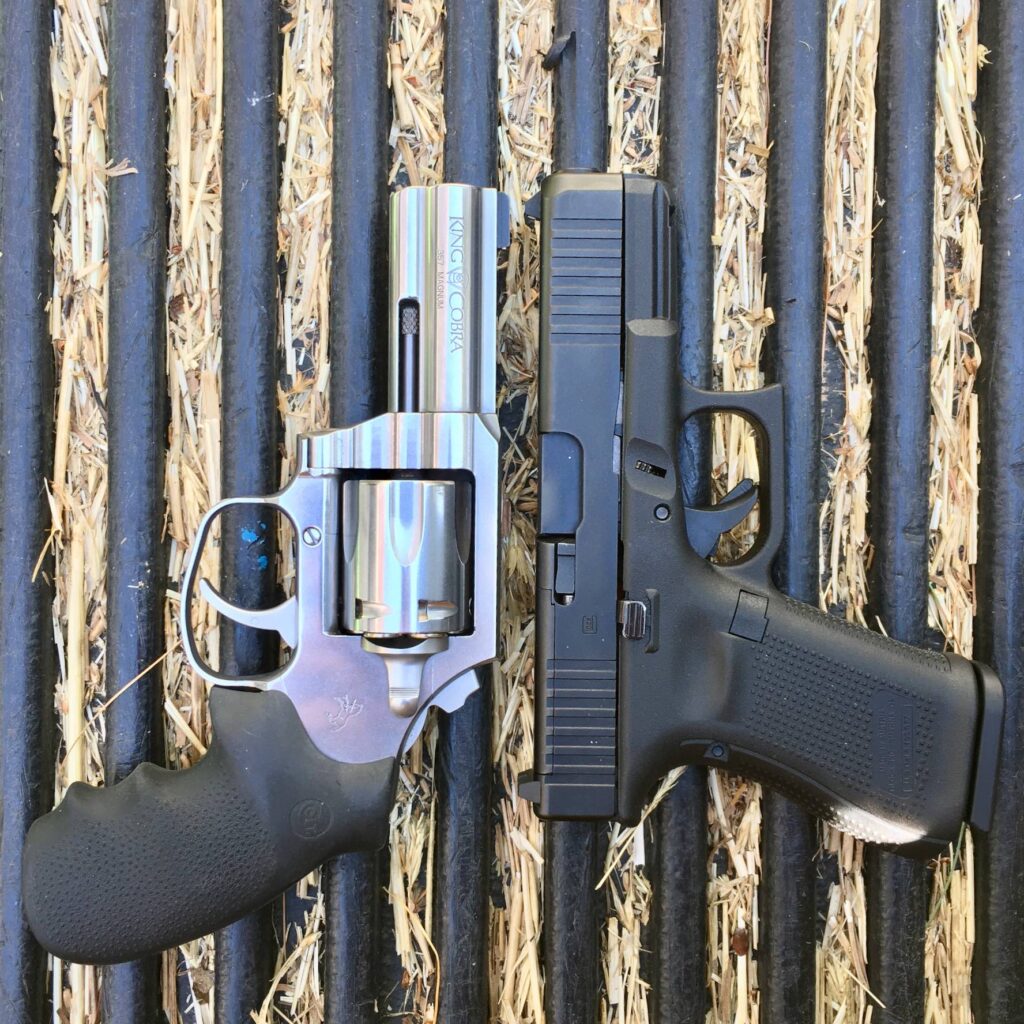
Here’s the thing, friends. If you ask that question of someone, what you should get, instead of an answer, is a long list of questions in return. If you ask, “what gun,” and you get an unabashed recommendation for a particular brand or model, then the only thing you know for sure is that you asked the wrong guy (or maybe the right guy, on a day when he’s worn out and doesn’t have the patience to get into it).
The quick answer to “what gun” is, “it depends.” It depends on a lot of things, such as:
-
-
- What do you want to use it for?
- What experience do you have with guns?
- How much time and energy are you willing to invest in training?
- What is your living arrangement?
- Who else will be using it?
- What kind of mechanical aptitude do you have?
- Do you have any kind of injuries or physical limitations?
- How big is your hand?
- What are the laws like in your area?
- Where will it be kept, and how will it be stored?
- What kind of threat do you envision needing to defend yourself from?
- Will you be carrying the gun? If so, how?
-
And that’s just a start!
Guns are tools, and you not only have to pick an appropriate tool for the job, you have to pick an appropriate tool for you. Your strengths, limitations, hand size, dexterity, recoil tolerance, commitment, and aptitude are all factors in picking an appropriate gun, and they’re different than the next guy’s. What may be good for him, may not be good for you, because you’re different people. As a result, answering the question of “what gun” necessarily involves a lot of exploration, to determine your personal needs and abilities first, before we determine the equipment that will work best for you.
If you don’t know which gun is best for you, that’s OK. Find someone who will ask you the right questions, and they’ll get you started on the right path, but don’t trust a blanket answer to a complex question.
Supply issues
Finding the right gun can be difficult enough in normal times, but in the middle of a crisis, things become even more problematic due to the laws of supply and demand.
When there’s a run on guns like we’ve seen this year, you’re not going to find a large selection of choices available for sale. The most popular models will often be unavailable, or very expensive when they are available. Whereas you might be able to select from a wide range of options in normal times, your choices will be very limited indeed, in the middle of a buying panic.
At the class this weekend, I heard a student ask one of the instructors, “what do you think of a Turkish bullpup shotgun in 12 gauge?” While a flood of return questions entered my mind, the instructor asked one of the better ones–“why are you interested in one of those?”
“I think I need a shotgun, and those are the only ones left at any of the stores,” he said.
The instructor deferred, claiming ignorance of the gun. A wise choice. However, our erstwhile shopper received a number of enthusiastic replies from the other students in the class. None of them had actually fired one of these guns, but that didn’t stop them from recommending one. In some cases, they were obviously inspired by the gun’s unique looks (“those are so cool—they look like something out of Star Wars”), and in one case, by the gun’s reputation in video games (I wish I was kidding, but I’m not).
I’ve seen two of these guns in classes I’ve taught, and both of them failed to work properly. Actually, one of them failed to work at all, and the one that did work was spotty. It had all the handling characteristics of a left-handed leaf blower, but sadly, not the reliability.
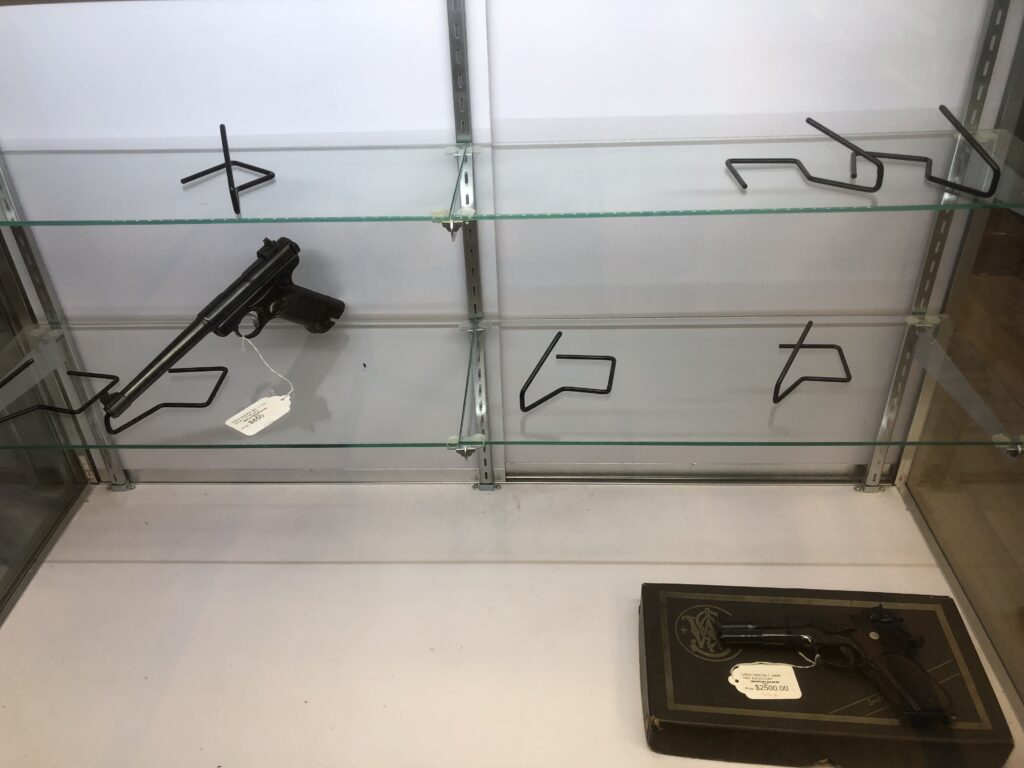
That’s not the point though. The important point is that if we listen, the market has a voice, and it can tell us something very important. When I pulled the student aside later, to let him know about my negative experience with the type, I asked him why he thought these shotguns were the only ones that could be found in quantity in the middle of a panic where anything that went bang was flying off the shelves?
I saw a spark, but wanted to drive home the point. “Why do you think,” I asked, “that all the shotguns normally used by police, the military, home defenders, hunters, and serious competitors are sold out, but these guns are still widely available?” He clearly understood where I was going now, and understood that the gun was probably not worth his time or money. We discussed other ways that he could obtain a better gun for his uses, to include putting a deposit down to get priority on the next shipment of quality shotguns.
This is an important concept for a potential first-time buyer to understand. You have to understand the market that you’re in, and what it’s telling you. In a crisis, quality products are going to be scarce, and they’re going to cost more than they normally do when you actually find them. If you can find a lot of it, and the price is below market standards, it’s probably not a “good deal.” You don’t have to be a gun expert to understand this, just a savvy shopper. Caveat Emptor.
A corollary is that quality products will also disappear fast in a hot market, so you can’t afford to make leisurely decisions—if you find the quality product you’re looking for, and the price is reasonable (for the present market conditions, not what they were selling for last year, before the panic) then you probably need to act on it right away. Don’t let it go.
Tinkering
One of the students in the class was smitten with the highly customized pistol worn by one of the instructors. The instructor was rightfully proud of the gun, and all the work he had put into optimizing it for his particular mission/use.
In the process of explaining the custom features of the gun, the instructor encouraged the student to make similar modifications to his own gun. By the time the two had finished the conversation, the student was broadcasting his intent to have similar work performed on his factory stock model.
I had the chance to talk to him later on, at lunch, and he quickly mentioned the custom work he was going to have done to his pistol, to include a number of extended controls, and a trigger job to lighten the trigger pull. “Don’t you think that’s a good idea?” he asked.
“You seem to be shooting well without those things today,” I said, “why do you think you need them?” The student answered that the extended controls would make it easier to operate the gun with his smaller hand, and the lightened trigger would make it easier to shoot accurately.
“That’s true,” I replied, “but everything has a cost.” I went on to explain that since he planned on carrying his gun for defense, he probably didn’t want to add extended controls that could be easily bumped or pushed at the wrong time. How would he like to accidentally jettison his magazine when the extended button got pushed without his notice? Or accidentally create a stoppage as he was shooting, because his thumb bumped into the extended slide lock and interfered with the functioning of the slide? I showed him some improved handling techniques instead, which allowed him to work the pistol properly with the stock controls installed.
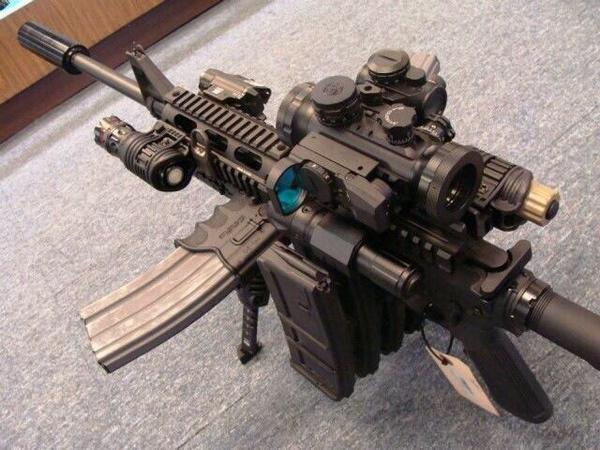
With respect to the lightened trigger, we discussed how it could be an advantage on a sporting or target gun—like the instructor’s gun—but could be a disadvantage on a carry pistol. In a moment of great stress, having a very light trigger pull could lead to a negligent discharge that carried severe consequences. Additionally, some legal and industry professionals advise there are legitimate concerns about altering trigger pull weights in this manner, as they could increase your risk at trial and make a bad situation worse in the courtroom—not guaranteed of course, but why give your enemy ammunition to use against you?
“Besides,” I said, “wouldn’t you like to be able to pick up any pistol of that type and shoot it well, even if it didn’t have a custom trigger?” After all, who says you’re going to fight with your own gun?
Part of the fun of owning and shooting guns is customizing them to suit your tastes and preferences, but we’d be wise to draw a distinction between guns used for sport and guns used for defense. Defensive guns can certainly benefit from reasonable modifications that enhance reliability, accuracy, or handling qualities, but we have to be careful to avoid creating other problems in the process. Tinker with your sporting guns to your heart’s content, but be choosy about what you do to your defensive tools.
Also, remember this. Our society is fond of seeking technical solutions for our problems, but it’s not always about equipment. The truth is that most of our shooting issues are better solved by focusing on the software—your mindset, training, and skill development—rather than the hardware.
The best “trigger job” you can get on your pistol is to buy a case of ammunition and shoot it up in conjunction with a good training plan. It will smooth out both the hardware and the software.
Incompatibility
Several students in the class were new gun owners who had purchased their firearms before they had any real shooting experience or education, and it was only after they started training with their guns that they discovered problems with them.
In one example, the student showed up with a very expensive 1911-pattern pistol that was an excellent gun, but he could not properly manipulate the safety on the gun because of his small hand and the limited reach of his very short thumb. He struggled to get the safety off as part of his presentation, and really struggled to put it back on when he was finished shooting.
In frustration, he asked the instructor for help. “Should I just use my support hand thumb instead,” he asked? The instructor explained that it wasn’t preferred, but yes, he could do that if he needed to.
In another case, a student showed up with a quality DA/SA auto that had a safety/decocker lever mounted on the slide. Once again, the student had a hard time reaching the safety lever with his smaller hand, and having enough reach to push the safety off as part of his presentation.
“Should I just use my support hand thumb, or should I carry the gun with the safety off, instead,” he asked? The instructor explained that both were possible, but preferred not to disregard the safety, so the student walked away with the plan to work the lever with his other thumb.
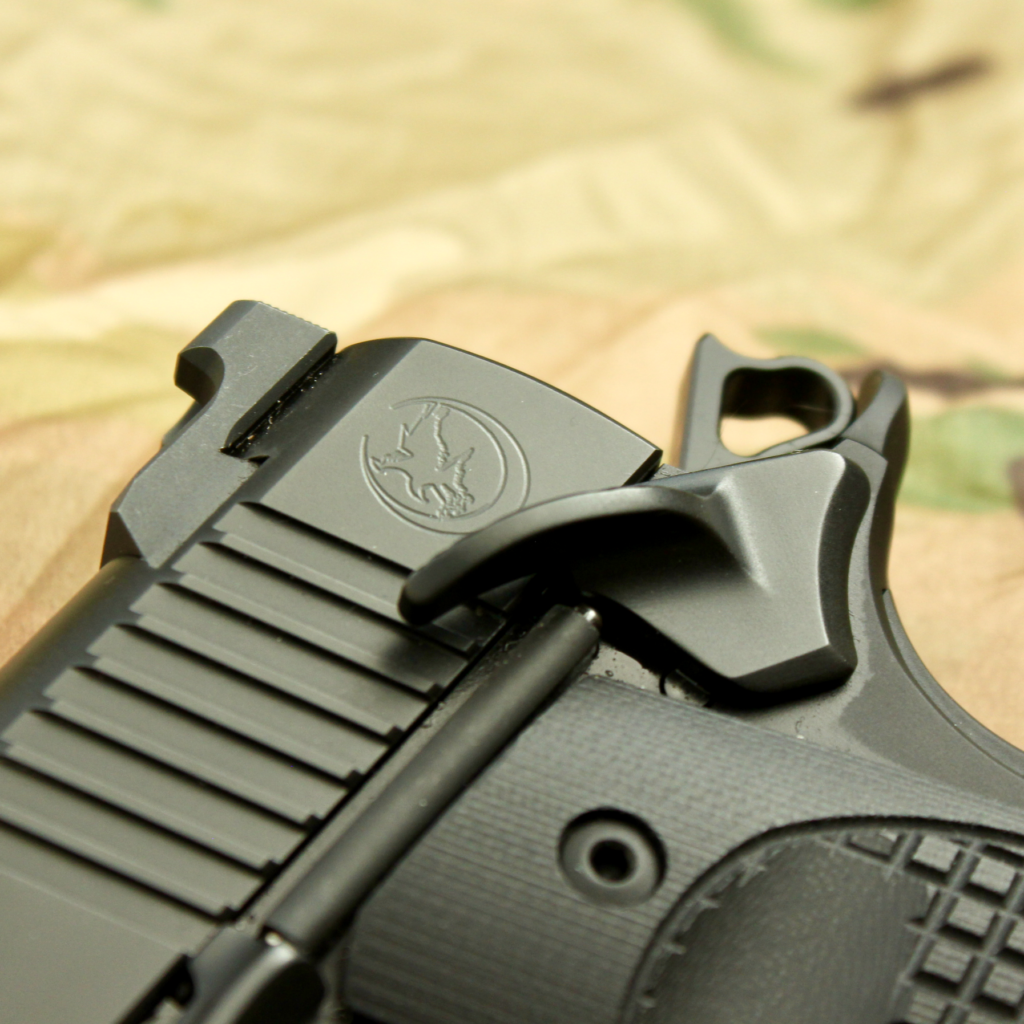
Unfortunately, neither student got a good answer to his question. The truth is that these people purchased guns that were incompatible with their physical limitations. Simply put, they bought the wrong gun.
It’s very important for you to be capable of operating the essential controls on your pistol—like safeties and decockers—with the hand you have on the gun. You cannot rely on a support hand to operate these critical controls because it may be unavailable. Your support hand might be injured, holding a phone or flashlight, moving or controlling a loved one, clearing a cover garment, or holding onto the enemy, and you cannot rely on having it available to get your gun into action or to make it safe.
Similarly, it’s unwise to simply disregard a safety that’s installed on your gun because it’s difficult to use. Is a Double Action autopistol like the Beretta 92-series safe to carry with the hammer down and the safety off? Absolutely, from the standpoint of an unintended discharge. The long, heavy double action trigger is a form of safety in itself, and other mechanical safeties inside the pistol (such as a firing pin block) will reduce the risk of an unintentional discharge if the weapon is dropped. Many police agencies and military organizations have actually mandated this practice for their personnel armed with weapons of this type.
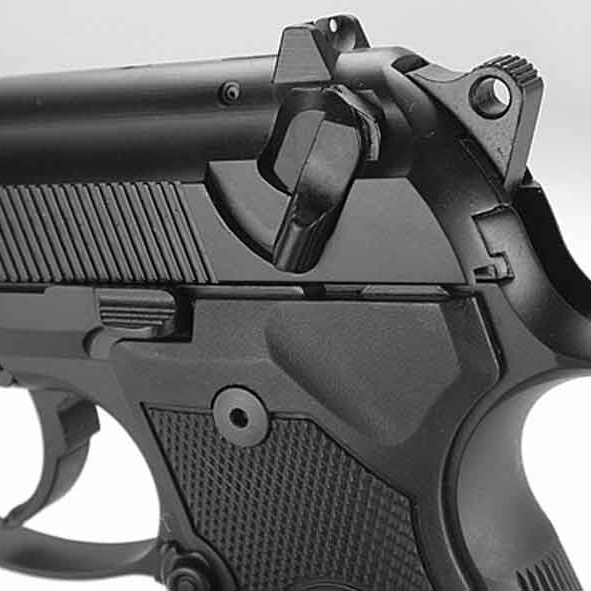
However, there IS a risk with carrying a pistol like this off-safe. If all of your training is centered around ignoring the presence of the safety, what happens when it accidentally gets knocked to the ON position by an armrest, seatbelt, elbow, or countertop when the gun is in your holster? What happens when you accidentally wipe it to the ON position when you’re loading the gun or clearing a malfunction under stress? If you haven’t habituated yourself to disarming the safety every time you prepare to fire, then you could find yourself with a dead trigger at the worst possible moment. Furthermore, if the safety is not part of your normal crosscheck, you may not understand that’s why your pistol isn’t working. If you think that couldn’t happen, then you haven’t spent enough time in stressful situations.
I have to note the instructor was in a tough spot, here. When a student shows up with the wrong gear, there’s very little an instructor can do about it in the short-term. He could send the student home and ask him to return with better gear, but the student would lose the benefit of the instruction (and would also be steaming mad). On the flip side, the instructor can teach the student how to work around the limitation, in order to participate in the training, but he risks having the student develop improper habits (and grow comfortable enough with them, that they lose the motivation to fix the real problem). There’s no winning here, for the instructor. I think the latter is probably the better course, but it’s certainly not ideal, and not a long-term solution for the student.
The important takeaway for the potential new gun owner, is that it’s always better to get the education first, before making the purchase. This is what saves you from throwing good money away on incompatible equipment. Please note that both of the pistols in these examples were excellent guns, but they were the wrong guns for these particular students. The “experts” may be entirely correct when they say, “the WonderBlaster 2000 is an excellent gun,” but it may not be the best choice for you.
In the event you’ve made an error like these two gents, understand that all is not lost. Sometimes the equipment can be appropriately modified to fix the situation. In the case of the student with the slide-mounted safety/decocker, for example, I advised that if he didn’t want to replace the gun, he could pay to have a gunsmith install one of the factory’s decocker-only levers, which would allow him to run the gun without a safety lever to contend with. He’d still have to shift his grip a little to work the decocker, but if he could do that, he’d have a much better option than ignoring the safety lever entirely and carrying off-safe.
In the worst case, a shooter who has chosen the wrong equipment can sell it and purchase something else. The current gun panic could make it more difficult to find what you need, but the bright side is that it also might make it easier to sell your old gun, and you may not lose as much value on the sale.
Some problems can be resolved through training, but others are truly a hardware issue. Fortunately, the hardware issues can usually be avoided with a little homework and help, before you spend your money.
Just getting started
There were many other questions that we could debrief from the class about ammo selection (FMJ or JHP? Brass, steel or aluminum?) and a myriad of other topics, but that’s enough for now. My goal here was not to focus on the specifics of the hardware issues, but rather to demonstrate a thinking approach to problem solving.
There are very few black & white answers in life, and that’s no different when it comes to firearms and training with them. If you’re new to the gun, you’ve got a lot of questions and very few answers, and it’s going to be tough for you to know where to turn for them. The best advice I can give is to ask a lot of questions, and evaluate the answers carefully. Usually, the best advice comes from people who ask you a question in return, first, before they give you an opinion.
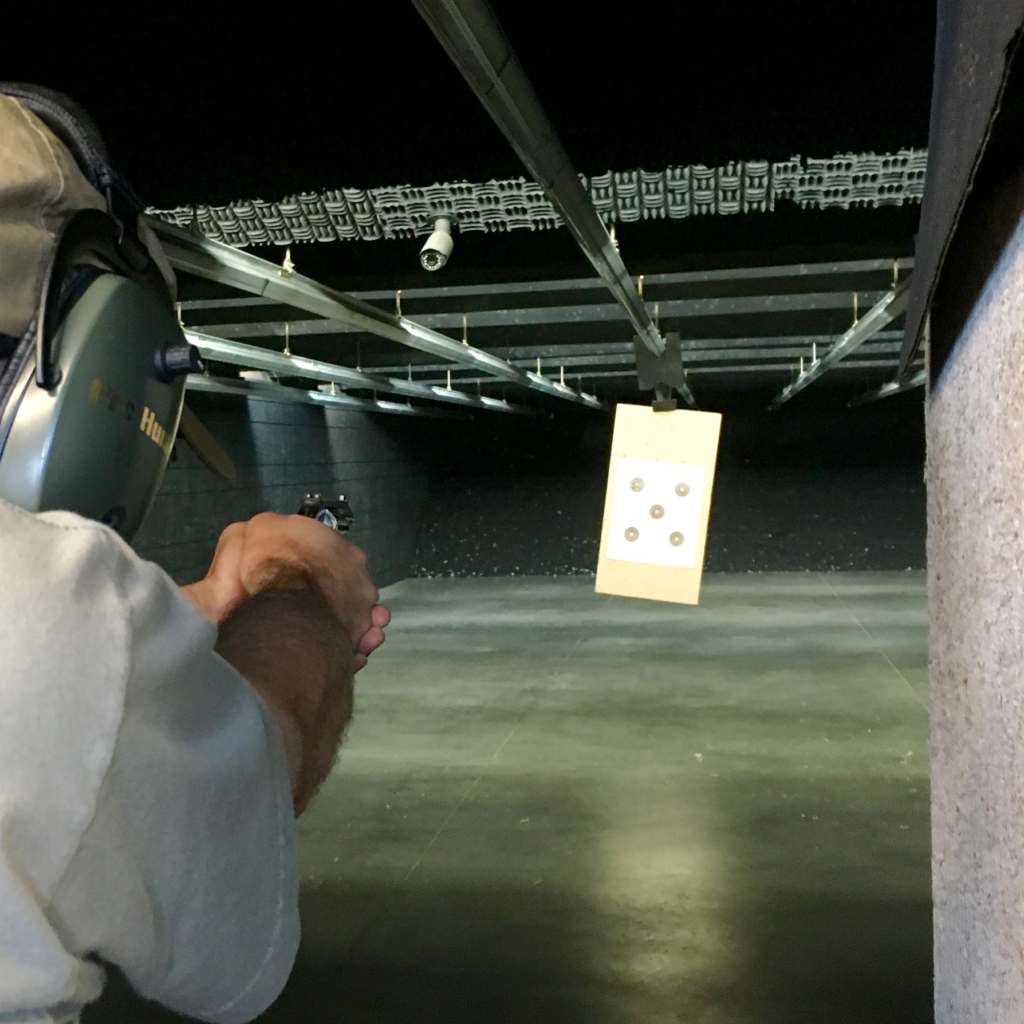
We like to think we’re a good resource here at RevolverGuy. Besides the staff, we’ve got a lot of smart and experienced readers who would love to give you the benefit of their wisdom and knowledge. So, if you’re a newbie and you need some help, drop us a line on the Contact Page, or leave a comment below. We’ll do what we can to help.
And for all you seasoned RevolverGuys, go out there and find a newbie to help! We were all in their shoes at one time, and now it’s time for us to lend them a hand, in the same way that we were helped by our mentors. Make a new friend, and help a new shooter to grow!
Be safe out there, everyone!
*****
The staff at RevolverGuy wishes you and your families the very best as we close out 2020 and get ready for the New Year. Keep the faith, keep your powder dry, and be safe out there! We’ll see you in 2021.

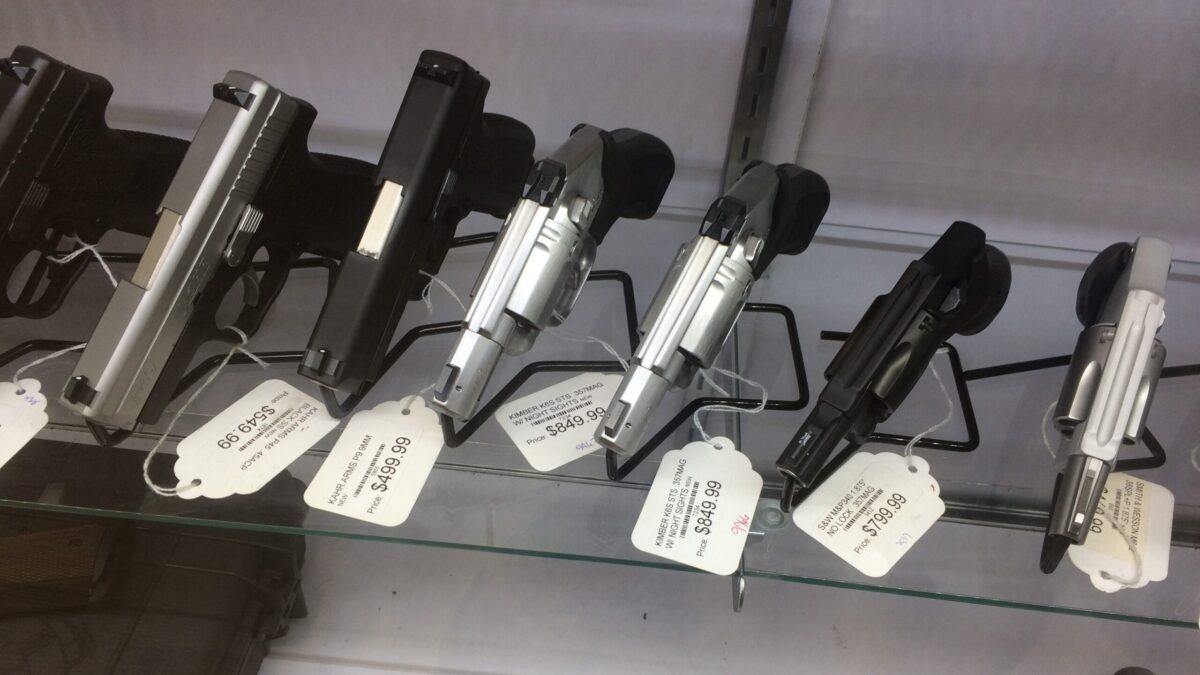
I have to ask forgiveness from my fellow revolver shooters up front. In defense of the instructor who recommended a “9mm Glock”; I’ve been carrying the Glock 19 as my duty sidearm (patrol and investigations) for the past fifteen years and it has been a very good pistol. It is simple to operate, shoots well and is forgiving if one’s technique isn’t textbook. Like having a poor grip because one had to make a fast presentation or one’s hands are wet from being covered in various types of liquids. It is also easy to maintain. As a former range master at my agency I also observed that rookies with no prior shooting experience took to the G19 fairly rapidly. The other Glock that my agency authorized was the G21 (45ACP) and that big old pistol wasn’t so easy for them to work. Anyway excellent article Mike – as always.
Jeff, if we’re confessing our sins, I need to say that I’m wearing a 9mm Glock right now . . . as I do nearly every day!
Outside of the fact it has no soul, I think the Glock is an excellent pistol, and have recommended them to many shooters. But, like you, I wouldn’t make that recommendation without careful consideration. Of course, when we’re talking about selecting a gun for an agency, there are many other factors that get wrapped into the decision which aren’t necessarily important to the individual shooter.
Glad you enjoyed the article! Hope you had a great Christmas!
Jeff,
I doubt anyone here is going to argue with your logic. I’ve carried a Glock 19 since 1995 and the transition away from duty revolvers. I’ve had zero issues with it except having to replace the night sights every 12 years. You are correct that in many ways it is one of the easiest guns to shoot and is easily learned.
There are countless folks who aren’t fortunate enough to have our years of experience with shell shuckers, and for them, the revolver might be the best place to start. I know in my own experience, I was far more comfortable carrying a revolver than any single action semi auto. My mileage was all over the place.
Hi Mike,
Hope you and yours had a Merry Christmas!
Generally, when people ask me what gun they should buy, I tell them …”You’ll shoot your eye out kid.” 😉
But then I follow up with a bunch of questions similar to the ones in your “It depends” list. It’s interesting that so often they cannot answer many of those questions. It’s obvious they have never put much thought into what gun ownership is really all about. At that point, I just tell them to think carefully about some of what I said and get back to me when they sort some of that out. More often than not, they never bring it up again.
Great write up with lots to consider.
Mike (nMW)
Thank you Sir! Yes, it’s interesting how many people get scared off when you ask a few questions. This isn’t like buying a toaster, and some folks just aren’t ready for it. We can help them get there, but they have to have an open mind, a desire to learn, and the willingness to do the work.
BTW . . . best Christmas movie EVER! A+++++++ for you, for that reference! ; ^ )
Oh man, did you open a Pandora’s Box here – and it’s good that these issues are brought out of the box and laid out on the table. The questions that you posed in the article are ever so important, and are perhaps the least frequently asked. As a well known instructor is apt to say – the M1911A1 is the world’s finest close quarters combat weapon and the king of feedway stoppages. Repeat that a few times and let it sink in.
I can only imagine the desire to scream out loud with some of those experiences and students. Those who have been around firearms since the Earth cooled (for me, it was shortly after the 100 years war) most have learned either the hard way or by sage guidance (mostly the hard way) that what looks good or works good for someone else might be downright wrong for you.
Folks should really seek out a range that has an array of rental guns. Try a few, then try a few more – and more. Try every one you can come across within reason. Find your friends with guns and join them at the range to let you try them. Never buy a gun based on emotion or panic – that’s a sure fire prescription for disappointment.
All of the glitz, gimmicks, and fancy doo-dads are nice if you have money to burn, or you’re supporting Brownell’s or other custom gun fabricators – but there’s a lot to be said for factory parts (Especially in the Glocks). Some of the most reliable and easy guns to shoot, many times, don’t look like much: A police department trade-in S&W Model 10/64, or Model 15/67, as classic eggzamples. I’ll take one of those any day over a Super Whoo Hoo Custom Slide Blaster ! Your mileage may vary.
Can we get an “Amen” from the assembly?
Amen!
I’ve been asked the “what gun should I get” question and received blank stares from the follow-up questions a few times, so I have a semi-prepared answer these days. I explain that it depends on what they want to do and give some examples (a shotgun is good for both hunting and home defense, but sucks – and is probably illegal – for concealed carry; I explain the fit issues I have with Glock vs S&W’s semi-autos but my discomfort with the operating mechanism of the better fitting gun; I – of course – mention why I personally prefer revolvers, but make sure to tell them about the issues that some people have with the trigger pull; etc.). Some times that leads to better questions on their part and some times it doesn’t, but at least they have some more info than just, “Greyson said to get a 3 inch SP101 and some Chig’s Grips panels.”
I also completely agree with the benefits of keeping a gun as stock as possible. I do like to be able to customize grips and I have some orange nail polish on all of my plain front sights, but anything that makes my gun function differently than the original configuration needs a REALLY good reason. I did go ahead and swap the mag release on my SIG P250 since I shoot left handed, and the normal orientation makes it way too easy to drop a mag if I lean or bump against something, but even that required some careful consideration and testing.
That sounds right to me, Greyson. I’ve got no problem with making sights easier to see, or putting better stocks on a gun—I do the same to all of mine!
Of course, now you have me looking up Chig’s Grips and realizing that I can’t do without a set. Wow. Those are beautiful! Thanks for the tip!
Saying that “it’s not like buying a toaster,” is a true statement. It really matters what capacity toaster you are looking for, its use in residential or commercial applications, the capacity of the toaster, and the ability for a fast reload, not to mention brand reliability and functional reliability of the charging handle., if indeed you are looking at a sem-automatic one vs. a “revolving,” or for that matter the “single shot” toaster oven.
Then the is the entire tangential issue of how to treat the toast afterwards, which goes well beyond the scope of this reply. Suffice it to say that toasters are a complex issue.
Haha! But Charles, the most important question, of course, is what side to butter the toast?
An existentialist might say, “the side that lands face up when you drop it.”
A liberal would say, “the left,” a progressive would say, “butter is bad for you, and you shouldn’t eat it,” and a communist would say, “there is no butter, hasn’t been for years.”
But a conservative will say, “any damn side you want, and put on as much as you like, we’ll make more.” ; ^ )
GREAT to see you here in the comments, Sir! We’re glad to have you. Keep up the great work behind the microphone!
Mike
Outstanding article! Several times in the course of reading it, I thought, “Hmmm, was he in one of MY classes?” I’m pretty sure you weren’t, but some of the situations you described have happened almost verbatim in quite a few of my classes (hopefully minus the bad advice).
I think this is a well-reasoned, clearly-written guide to how the “What gun?” situation *should* be handled, and I plan to share this widely.
Thank you!
Thank you Sir! It’s great to see you here!
No, it wasn’t one of your courses, but isn’t it funny how universal these issues are, that they’re so familiar to all of us?
Wishing you, your staff, and students a safe and productive year of training in 2021!
Excellent tips!
The last person that asked it to me was a bodyguard, that works with a security-firm owned pistol (Taurus PT-938).
My answer: buy the same model that you carry on duty. You are already conditioned and can use the same holster. Don´t mess with your mental conditioning choosing a gun with a different grip angle, command positions and disassembly sequence.
Here in Brazil, imported guns are subject to lack of spare parts. There´s no repair stations of foreign brands here. Imports depends of dollar exchanging rates. Importers brings some guns to Brazilian market when the dollar rate is low (as in middle of 90´s), but disappears when exchanging rates increases. Even Glocks are too expensive here.
I have Walther and Heckler & Koch pistols. Even spare magazine are very hard to find, and, if found, are indecently expensive. Both are excellent guns, but a single lost magazine would be a big trouble.
That’s an excellent bit of advice, Erick! Carrying the same gun (or style) off duty, as you carry on duty, is very smart.
Thanks to Erick for the perspective from Brazil. His situation makes me thankful for how good we have it here in the U.S. when it comes to the availability of firearms, ammunition and gear. Our draughts with respect to instant access to these items have always been temporary; caused by political scares and social conditions. We would be wise to do what we can to maintain our liberties- that draught could get a lot more permanent!
a few years ago, I bought a Glock 42 (no expert advice [low treat area]). Criteria : reliability, weight (or lack of it), and concealment. Never bothered to change the mag drop for a left hander (we are ambidextrous) . The one bad thing is the lack of a positive lock, so keep it with an empty barrel, rack it before firing (better than grabbing depressing both the the trigger and shooting yourself in the foot). A last thought on practice – five rounds only in a magazine. After that people forget…
Thanks Don, good to hear from you. With all due respect, I’m not an advocate for chamber-empty carry, though. My thought is that if you’re feeling compelled to carry with an empty chamber, you’ve got the wrong holster and/or the wrong gun. Violent attacks happen too quickly, and at too close of a distance, for a person to plan on having the time, space, and ability to rack the slide before firing. Additionally, there is a significant risk that a person will forget to rack the slide, in the stress of the attack. This is especially likely for people who haven’t put in sufficient reps to program this behavior as part of their drawstroke.
Everyone needs to make their own choices, and I will respect their decisions, but I’m just not in favor of chamber-empty carry and think it’s a dangerous practice. I believe most people who are comfortable with this practice are either not thinking it through, or they have a mistaken impression about the dynamics of violent encounters. I don’t say this to be mean or insulting, just to be honest about the situation.
I would much rather carry a 5-shot snubby that’s ready to go, and safe to carry in a fully loaded condition, than an autopistol with an empty chamber. The latter is essentially an unloaded gun, and not much use to me.
Once again, I don’t mean to sound offensive or insulting. I just don’t want to encourage what I see as a dangerous practice that can get good guys and gals in trouble. Thanks again for writing in. Be safe!
Thanks, Mike
I appreciate your concern and critism The other G42 advantages outweigh the drawbacks…A humble thought that if racking is part of a draw, it would be instinctive like taking the safety off (or cynically watching the attacker trying to fire it). The issue is between defending yourself or accidently shooting yourself or others (at vey low threat level). I have been witness to four close calls (3 shotgun [one mine], and 1 a 457 pistol)….
Understood, Don. We all have to evaluate our circumstances and make our own choices. I just hope that folks will understand that there’s a big pitfall to assuming you will have a support hand available to rack a slide when you get in a fight, and the time and distance to do it. Those can be very dangerous assumptions. Thanks for sharing your perspective on this, and be safe!
Again thank you Mike (I appreciate your patience with a fool). Just a note: I believe the root cause of all four incidences I noted was an interruption or distraction during the steps of firearms drill. Forgetting that they loaded or failed to unload the weapon…
Haha! No fools here, Don. Just a bunch of good folks who are learning, myself included! Glad to have you aboard and hope you’ll find other articles here of interest.
Great write up, as usual Mike!
I am “the gun guy” in my circle, and have came to the understanding of most people asking this question do not know what they are asking about, or for. I respond with a few other questions to initiate some thought processes, and try to follow up with something like “just try renting as many as you can/go shooting with someone who can let you try some out; and after that just make sure whatever one you choose fits your hand very well/is comfortable for you.
Not necessarily the best advice in every situation, but it sure beats just telling them to buy the latest wunder pistola of choice from the interweb. That happens by alot of others when I have been in conversations with new shooters and experienced shooters.
There’s nothing that beats hands-on experience, is there Lance? I had a friend recently who was pretty sure he wanted to buy a certain brand of gun, even though he’d never shot one. After 30 minutes on the range with my sample, he’d decided against it. I think I saved him $600!
It’s great that you elaborated on what questions we’d ask ourselves before buying a gun. My cousin was attacked last month, and luckily, she wasn’t injured. She joined a personal defense class and wants to buy a gun to be prepared to face a life-threatening situation, so she’ll surely benefit from your tips.
So sorry to hear about your cousin, Eli. We’ll keep her in our prayers, and hope this article will be helpful to her.